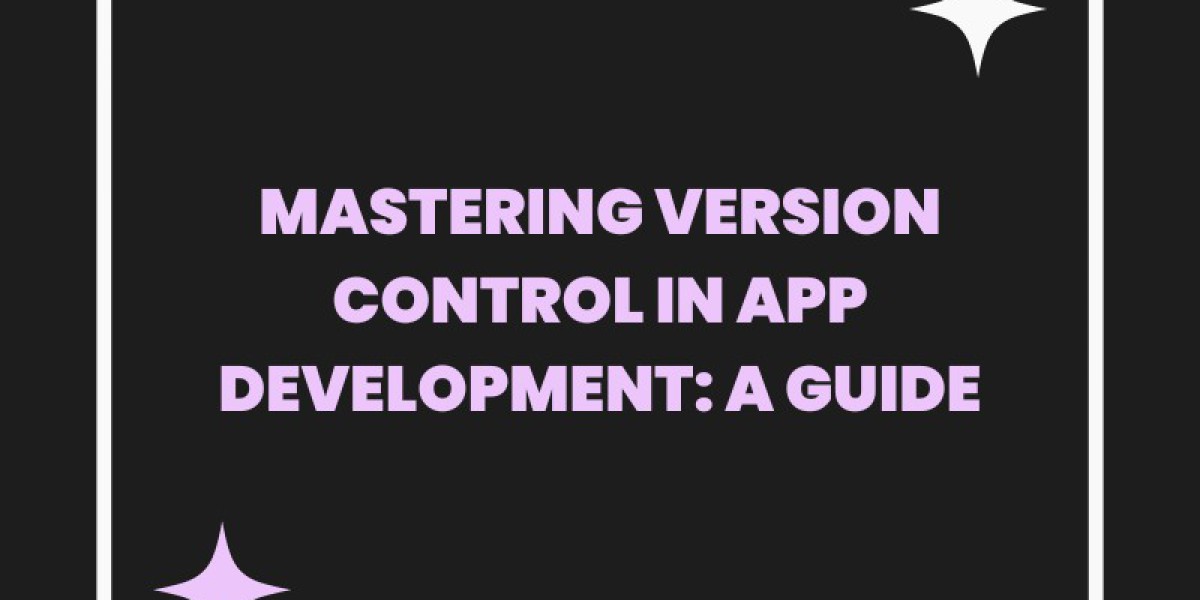In the world of app development, version control is a crucial aspect that every developer should master. Knowing how to use version control in app development not only helps streamline the development process but also ensures that changes are tracked and managed efficiently. In this guide, we will explore the basics of version control in app development and provide tips on how to effectively utilize it to improve your workflow.
Understanding the Basics of Version Control
Version control acts as the backbone of efficient app development, serving as a systematic method to track and manage changes to the codebase over time. This essential tool enables developers to navigate through the history of a project, facilitating the process of pinpointing when and by whom changes were made. Key to collaborative efforts, version control systems empower developers to undertake various tasks, such as feature development or bug fixing, concurrently without stepping on each other’s toes. The core functionality of version control revolves around its ability to manage divergences and convergences in the project's code, allowing for a seamless transition between different stages of development. It encapsulates the project’s evolution, offering a dynamic snapshot at any given point in its lifecycle. This foundational understanding is vital for leveraging the full spectrum of benefits offered by version control, ensuring that developers can maintain a high degree of code integrity and project coherence.
Choosing the Right Version Control System
When embarking on app development, selecting an appropriate version control system (VCS) is a decision that can significantly impact the efficiency and manageability of your project. Among the array of options, Git and SVN stand out as prominent choices, each catering to distinct project needs and team sizes. Git, renowned for its distributed nature, facilitates robust branching and merging capabilities, which is particularly beneficial for projects with multiple developers working on varied aspects simultaneously. This system enhances collaborative development, allowing for more dynamic and flexible handling of code changes. Conversely, SVN, a centralized version control system, offers a simpler model that might be more appealing to smaller teams or projects where extensive branching and merging are less frequent. The decision between Git and SVN should be guided by the specific requirements of your app development project, including factors such as team size, project complexity, and preferred workflow dynamics. Understanding the strengths and limitations of each system will enable you to choose the most suitable version control solution that aligns with your development goals, fostering a more organized and effective coding environment.
Setting Up Your First Repository
To embark on the journey of using version control in your app development process, the initial step involves establishing a repository. This digital archive is where your project's source code and its history will be stored, acting as a fundamental element for tracking modifications and facilitating collaboration among team members. Initiating a repository typically requires choosing a version control system such as Git or SVN, based on the project's needs and team preferences as outlined in previous sections. Once the system is selected, the creation of a repository can be done through a user interface provided by services like GitHub, GitLab, or Bitbucket for Git, or similar platforms for SVN. These services offer straightforward, guided processes for setting up new repositories, including options to initialize with README files, licensing information, and .gitignore files that determine which files or directories to exclude from version control. After setting up, it’s crucial to clone the repository to your local machine, which enables you to start working on the project files directly and use version control commands to track your changes. This step is the gateway to leveraging the full potential of version control in your app development endeavors, setting the stage for efficient collaboration and code management.
Branching Strategies for Efficient Development
Branching is an indispensable feature within version control that empowers developers to isolate their work on new features, enhancements, or bug fixes by creating separate branches from the main codebase. This strategy not only facilitates simultaneous development across multiple features but also safeguards the integrity of the production code. To harness the full potential of branching, developers must be acquainted with various strategies, such as feature branching, where each new feature is developed in its own branch, and Gitflow, a structured approach that defines specific roles for branches in the development process. Implementing an effective branching strategy requires a clear understanding of the project's scale, the team's workflow, and the goals for release management. By doing so, developers can minimize conflicts and streamline the integration of changes, making the development cycle more efficient and predictable. Utilizing branching to its fullest extent allows for a more organized codebase, enabling developers to focus on innovation while maintaining a clear path for the evolution of the app.
Committing Changes Like a Pro
Committing changes to your version control system is akin to taking snapshots of your app's development progress at specific moments. Each snapshot, or commit, should encapsulate a coherent set of modifications and be accompanied by a succinct, yet descriptive, commit message. This message is crucial as it provides context for the changes, aiding in future troubleshooting and project understanding. To maximize the effectiveness of commits, it's recommended to make them regularly and segment larger updates into smaller, manageable pieces. This approach not only simplifies tracking project evolution but also facilitates easier rollback to previous states if necessary. It's important to view each commit as a contribution to the project's history; thus, adopting a disciplined approach to committing ensures a well-documented and navigable codebase. Remember, the art of committing changes proficiently lies in the balance between frequency and significance, ensuring that each commit serves a purpose in the broader narrative of your app's development journey.
Merging and Handling Conflicts
Merging represents a critical step in app development, where changes from separate branches are unified into a single codebase. This process, although fundamental for incorporating diverse functionalities and bug fixes, occasionally gives rise to conflicts when concurrent modifications clash. Successfully managing these conflicts is imperative to maintain the integrity and progress of the project. A proactive strategy involves regularly communicating with team members to understand the context behind their changes, thus preempting potential issues. When conflicts do arise, employing tools provided by version control systems can simplify their resolution, allowing for a visual comparison of differing code segments. It's also beneficial to adopt a methodical approach to conflict resolution, addressing each discrepancy individually and verifying the functionality of the code after adjustments. This meticulous attention to detail ensures that the merge process strengthens the project, rather than introducing errors or inconsistencies. Embracing this aspect of version control equips developers with the means to navigate the complexities of collaborative coding, ensuring that the project's advancement is a cohesive and collective effort.
Collaborating with Others Using Version Control
The essence of version control extends beyond mere code management; it encompasses fostering a collaborative environment where developers can work in harmony. Utilizing features such as pull requests provides a structured pathway for introducing changes, where team members can submit their updates for review. This process not only ensures that each modification undergoes scrutiny for quality and compatibility but also promotes a culture of collective code ownership and accountability. Code reviews further enhance this collaborative atmosphere by offering a platform for feedback and discussion, encouraging a deeper understanding of the codebase among team members. Moreover, the ability to share code effortlessly through version control systems eliminates barriers to collaboration, enabling developers to contribute from any location. The integration of these practices into the daily workflow not only elevates the quality of the app development process but also strengthens the bonds between team members, paving the way for a more cohesive and productive development journey. Engaging in these collaborative practices leverages the full potential of version control, transforming individual efforts into a unified force driving the project forward.
Advanced Version Control Techniques
Diving deeper into the world of version control opens up a realm of advanced techniques designed to streamline and enhance the app development process. Implementing hooks, for instance, allows for the automation of specific actions within the version control system, such as running tests before a commit is finalized or notifying team members when a new commit has been pushed. Another powerful strategy is the integration of continuous integration (CI) and continuous deployment (CD) pipelines. These practices ensure that code is automatically tested and deployed, maintaining a high standard of code quality and significantly reducing the time to release. Additionally, refining code review workflows can lead to more efficient and constructive feedback cycles, further improving code quality and team dynamics. By embracing these advanced techniques, developers can not only increase their productivity but also foster a more robust and reliable app development process. As the landscape of version control evolves, staying abreast of and adopting such innovative practices will be key to mastering the art of app development.



